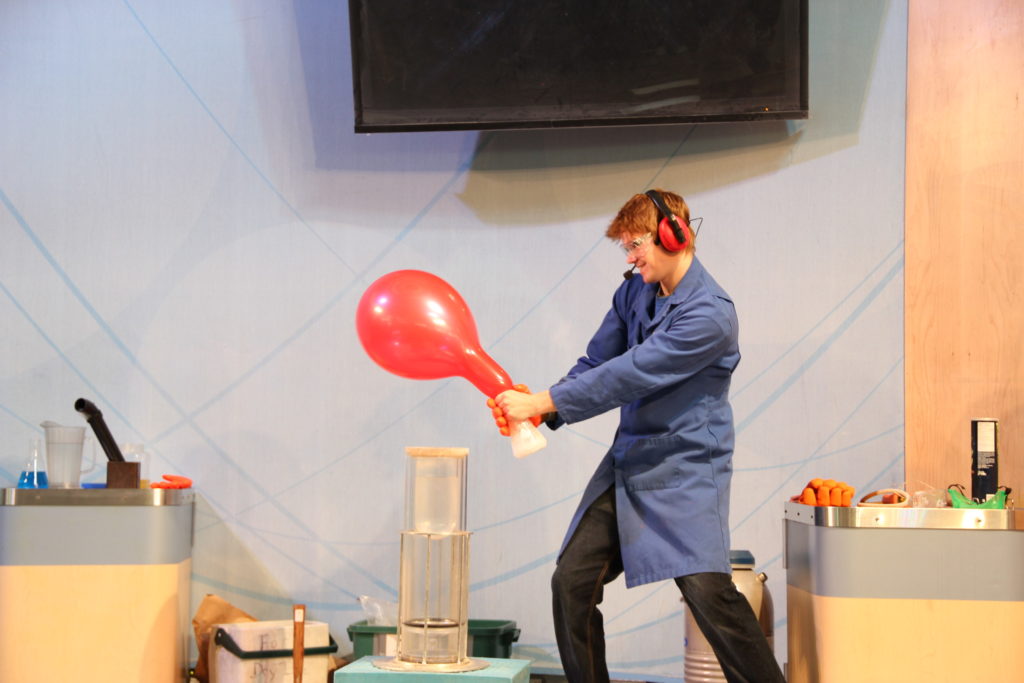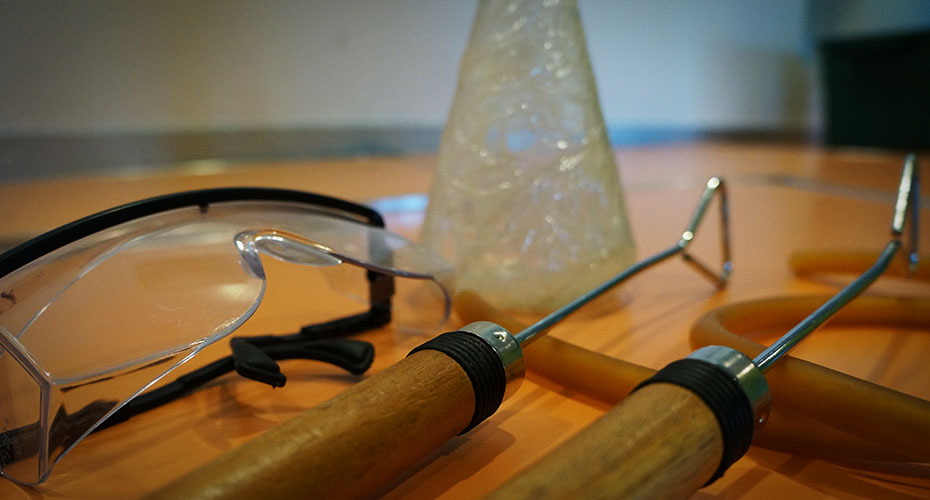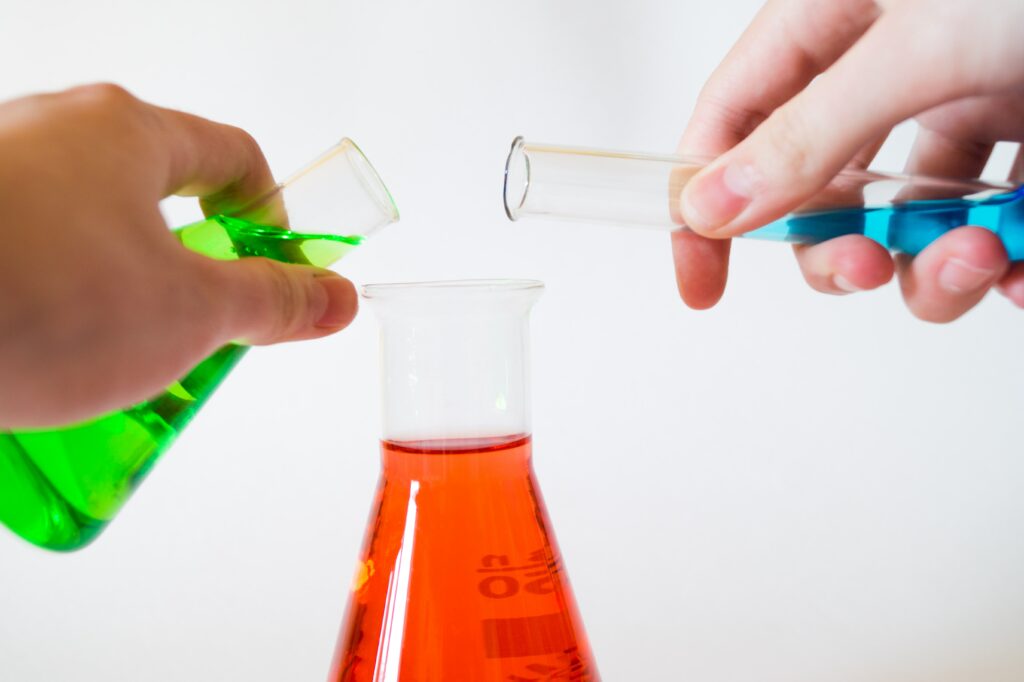In this demo, students witness the creation of blue light from a chemical reaction, an example of luminescence. This is similar to the reactions that fireflies uses to emit light, and to those used in "glow-sticks" and some roadside emergency lights.
In the demonstration vial is a mix of luminol, perborate and copper sulphate. When water is added the copper sulphate dissolves and reacts with the luminol. This forms a molecule that has an excited electronic state. The molecule then sheds this extra energy in the form of light. This is a "cool" light (that is, there is no heat created along with it). It will continue to be emitted until one of the reactants is used up.
Luminol is used by forensic scientists to detect blood. Crime lab investigators can spray a luminol solution and in the dark the bloodstains will glow with blue light. Haemoglobin (found in our red blood cells) contains iron which reacts with the luminol like the copper in our light.



